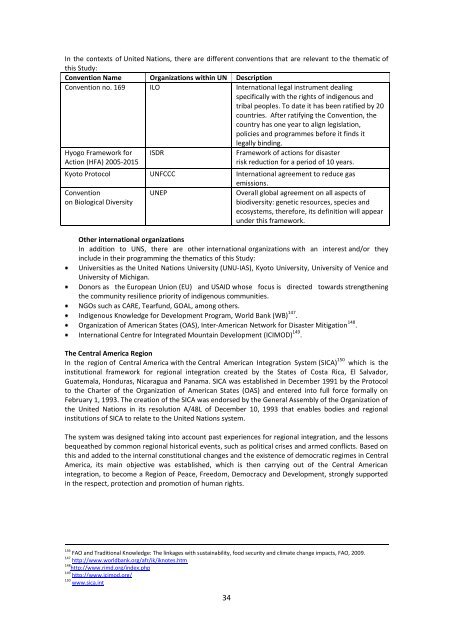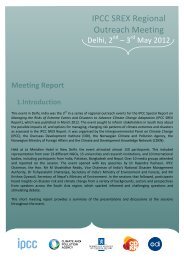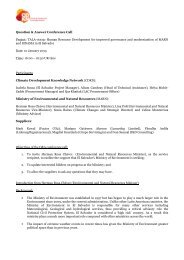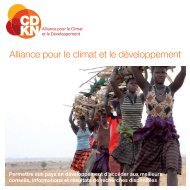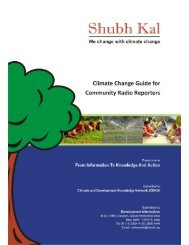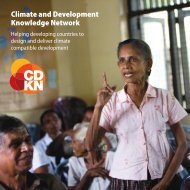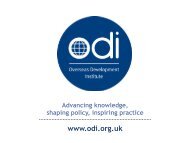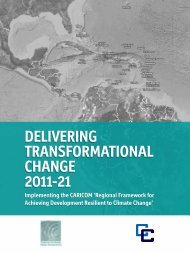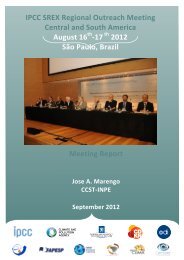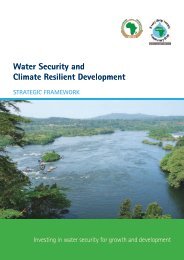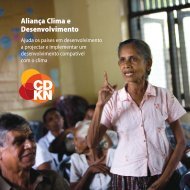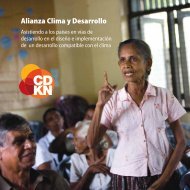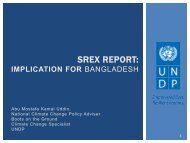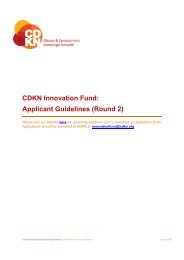Harmonized Perspectives - CDKN Global
Harmonized Perspectives - CDKN Global
Harmonized Perspectives - CDKN Global
- No tags were found...
Create successful ePaper yourself
Turn your PDF publications into a flip-book with our unique Google optimized e-Paper software.
In the contexts of United Nations, there are different conventions that are relevant to the thematic ofthis Study:Convention Name Organizations within UN DescriptionConvention no. 169 ILO International legal instrument dealingspecifically with the rights of indigenous andtribal peoples. To date it has been ratified by 20countries. After ratifying the Convention, thecountry has one year to align legislation,policies and programmes before it finds itlegally binding.Hyogo Framework forAction (HFA) 2005-2015ISDRFramework of actions for disasterrisk reduction for a period of 10 years.Kyoto Protocol UNFCCC International agreement to reduce gasemissions.Conventionon Biological DiversityUNEPOverall global agreement on all aspects ofbiodiversity: genetic resources, species andecosystems, therefore, its definition will appearunder this framework.Other international organizationsIn addition to UNS, there are other international organizations with an interest and/or theyinclude in their programming the thematics of this Study:Universities as the United Nations University (UNU-IAS), Kyoto University, University of Venice andUniversity of Michigan.Donors as the European Union (EU) and USAID whose focus is directed towards strengtheningthe community resilience priority of indigenous communities.NGOs such as CARE, Tearfund, GOAL, among others.Indigenous Knowledge for Development Program, World Bank (WB) 147 .Organization of American States (OAS), Inter-American Network for Disaster Mitigation 148 .International Centre for Integrated Mountain Development (ICIMOD) 149 .The Central America RegionIn the region of Central America with the Central American Integration System (SICA) 150 which is theinstitutional framework for regional integration created by the States of Costa Rica, El Salvador,Guatemala, Honduras, Nicaragua and Panama. SICA was established in December 1991 by the Protocolto the Charter of the Organization of American States (OAS) and entered into full force formally onFebruary 1, 1993. The creation of the SICA was endorsed by the General Assembly of the Organization ofthe United Nations in its resolution A/48L of December 10, 1993 that enables bodies and regionalinstitutions of SICA to relate to the United Nations system.The system was designed taking into account past experiences for regional integration, and the lessonsbequeathed by common regional historical events, such as political crises and armed conflicts. Based onthis and added to the internal constitutional changes and the existence of democratic regimes in CentralAmerica, its main objective was established, which is then carrying out of the Central Americanintegration, to become a Region of Peace, Freedom, Democracy and Development, strongly supportedin the respect, protection and promotion of human rights.146 FAO and Traditional Knowledge: The linkages with sustainability, food security and climate change impacts, FAO, 2009.147 http://www.worldbank.org/afr/ik/iknotes.htm148 http://www.rimd.org/index.php149 http://www.icimod.org/150 www.sica.int34


